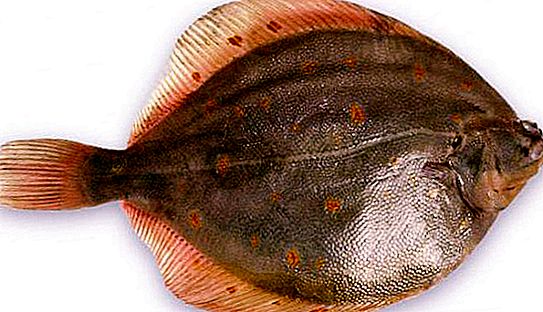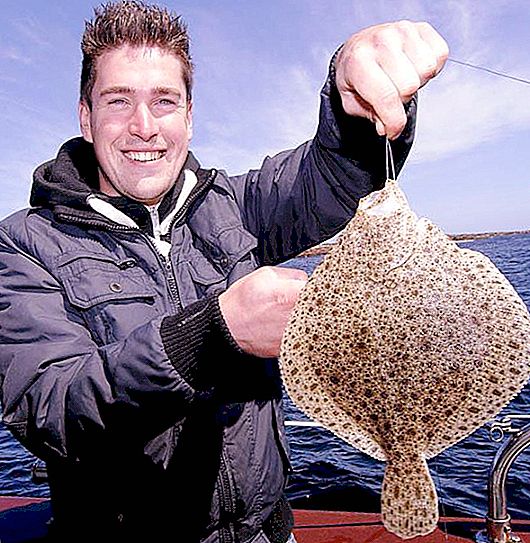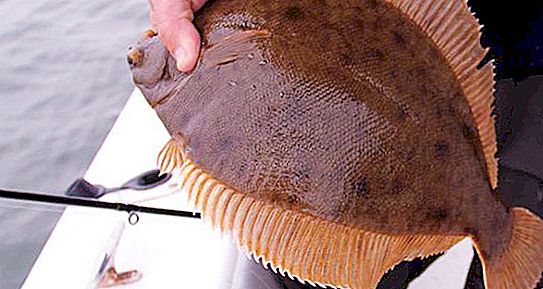Black Sea flounder fish, photo and description of which is in this article, from the family of flounder. Outwardly strikingly different from other species of fish.
Description
It is very useful, it contains a large amount of nutrients, vitamins and minerals. This Black Sea flounder has another name - Kalkan. This species is one of the largest in the flatfish family. The body of the Black Sea flounder sometimes reaches 85 centimeters, and the mass reaches fifteen kilograms. Kalkan can live sixteen years.
Habitat
Where is the Black Sea flounder fish? You can meet her in the Azov and Black Seas, in some parts of the Mediterranean. Sometimes a kalkan appears at the mouth of the Dniester and the Dnieper. Often found on the coasts of the Kerch Pass and the Western Crimea. Kalkan is found near the Theodosian Gulf. And also off the coast of Nikolaev and Kherson regions.
Habitat
Where does flounder fish live? Habitat - silty and shell (sand) soils. It is found at a depth of up to 100 meters. A smaller subspecies lives in the Sea of Azov. In the summer and winter, Kalkan prefers to stay at a depth. And in the autumn and spring - it pops up in shallow water. In summer, large young growth can be seen floating at the bottom in beach areas.
Appearance
What does the Black Sea flounder look like? Its description is very different from other species. The Kalkan has a high elongated body, slightly flattened, up to 80% of its own length. Sometimes it happens even more. The whole body is covered with bone tubercles. Like other brothers of this species (flatfish), it is formed in the form of horizontally arranged sides, like a thick pancake.
The eyes of the Black Sea flounder are located on the upper (left) side. The fins on this side are asymmetrical. Bottom bellied kalkan. Above, where the eyes are located, brownish, with small reddish spots. The Kalkan has no scales at all, but at the slightest danger he knows how to change color to the color of the bottom. The jaws of this fish are with bristle-shaped, even teeth. They are arranged in the form of ribbons. There are teeth even on the opener.
Food
Black Sea flounder - predatory fish. It feeds on small fish, crustaceans and mollusks. An adult Kalkan eats at least 150 grams of food. And prefers bottom fish and crabs:
- the sultan;
- hamsu;
- sprats;
- horse mackerel;
- Black Sea haddock;
- spider;
- herring;
- fry.
Breeding
Basically, the genitals of males of the Black Sea flounder mature at the age of 5 to 8 years, and females - from 6 to 11. Reproduction occurs at a depth of 25 to 70 meters in the open sea. Favorable temperature should be from 8 to 12 degrees. Reproduction begins in March-April and lasts until June. In some places until the end of July. But spawning peaks in May.
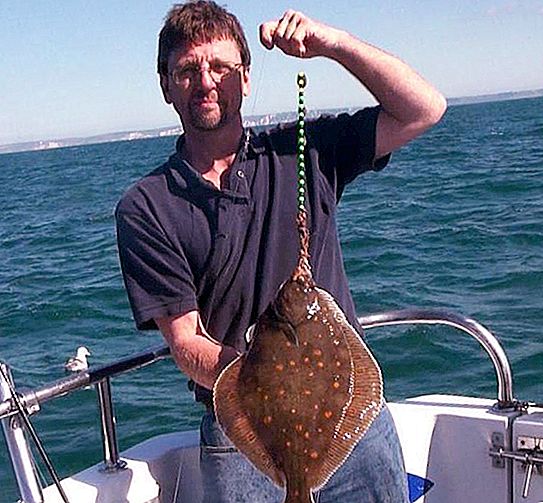
One fish spawns up to thirteen million eggs. The Black Sea flounder is the most prolific fish in the Black Sea. Despite the fact that the kalkan dies from sometimes adverse living conditions and is often destroyed by marine predators, a huge amount of swept eggs compensates for these losses in full.
Ripening eggs
Kalkan eggs are transparent and have the shape of a ball. With a small fat droplet. The caviar of the Black Sea flounder is buoyant, keeps close to the surface and is carried by the current. As a result, per 1 sq. M. water accounts for up to 10 eggs. Many of them die in polluted waters or eaten by marine life. Therefore, out of half a million eggs, only 500 larvae mature.
The first four days they have a yolk sac, which they feed on. On the fifth day, the mouth begins to form. But vision is still poor, so they move very slowly. This is a critical period, as only 25 out of 500 larvae survive.
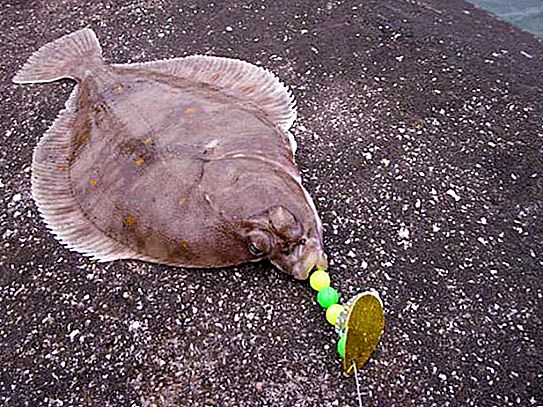
After 15 or 20 days they become fry and settle on the bottom. About 6 young individuals survive by the fall of them. Their length is first 7 centimeters. They hibernate at a depth of 30 meters. In spring, young Kalkans move to the coastal zone. By this time, their length is already 10 centimeters, and by autumn it reaches 16 cm. At this age, the Black Sea flounder has no enemies except the shark-katran.
The Kalkan spends the second wintering at a depth of 50 meters. By spring, it becomes 20 centimeters long. In four years, Kalkan is already 35 centimeters. Some individuals begin to spawn at this age.
On the verge of extinction
The Black Sea flounder, the photo of which is in this article, is a commercial and very valuable fish. She has a very tasty fillet. Therefore, in the 60s a lot of fish were caught, and the number began to decline sharply. As a result, a ban was imposed on catching a kalkan in 1986, since it was on the verge of extinction.
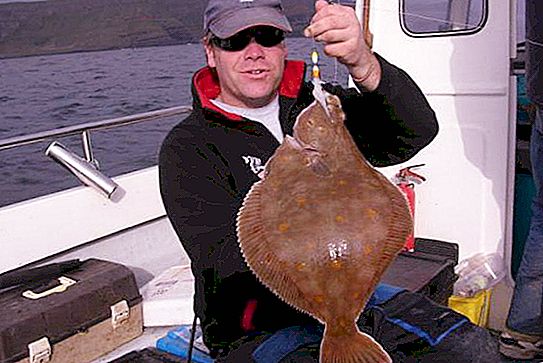
But the demand for this fish is huge, and the ban is not being respected now. Kalkan is caught by nets. They are even installed at the place of migration routes when the fish spawns. Which greatly undermines the abundance of this valuable fish. In addition, other species, sometimes very rare, also enter the network of poachers.
Curious facts
Kalkan spawns not annually. Ichthyologists can determine its age by the size of the ear stones. And the number of eggs is able to talk about the area, time and effectiveness of spawning. Malekalka, hiding at the bottom, digs into the ground with the help of a tail and fin. He makes wave-like movements with them, and he is covered with bottom soil. In the groove made, it becomes completely invisible.
The Black Sea flounder has different places of wintering, feeding and spawning. Caviar rushes along the coast, hiding in the depths in the summer. And in the fall he returns to the coast again. The older the individual, the deeper the fish sinks. In one of the expeditions, the submariners saw a kalkan at a depth of over 10 thousand meters.
Catching the Black Sea flounder began in the third century BC. In those days, women made necklaces from the spikes of this fish. A lot of fish was caught in ancient times.
Kalkan lacks small bones. There are only large ones on the ridge. Fat is concentrated mainly in the fin area. If you need low-fat meat, the fins are simply trimmed. And if this fish is baked in a foil or a pot, on the contrary, the fins must be left and you can not add extra fat or oil. Fresh-frozen fish has a slightly specific smell. But it is easy to clean. You just need to cut off the fins and tear off the skin from the carcass.
